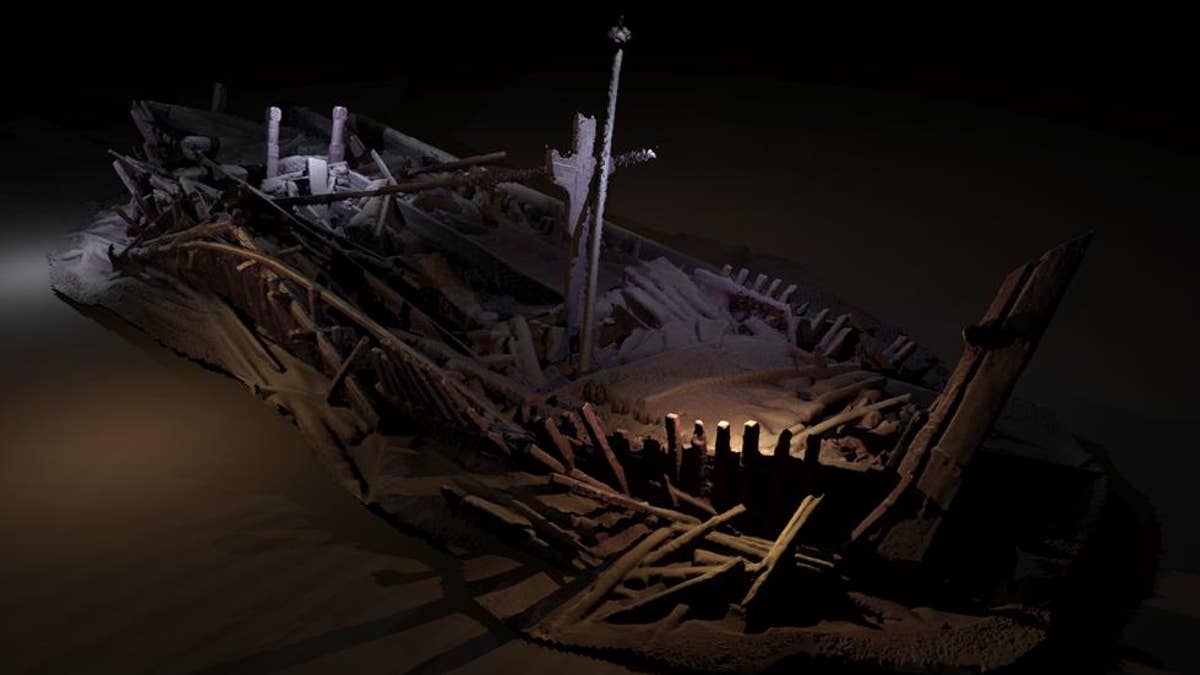
Photogrammetric model of a wreck from Ottoman period. (Credit: Rodrigo Pacheco-Ruiz/University of Southampton)
A shipwreck graveyard of more than 40 vessels which lay perfectly preserved for centuries has been discovered by scientists at the bottom of the Black Sea.
Researchers came across the ghostly wrecks by chance while mapping the sea floor at depths of between 1,000 feet and almost 6,000 feet.
At those depths there is so little oxygen that the timbers hardly decay – meaning wooden structures and even intricate carvings that are many hundreds of years old are still intact.
RECOVERED WWI GERMAN U-BOAT REVIVES 'SEA MONSTER' TALES
And they have been brought back to life with 3D imaging technology that reveals detailed pictures of the wrecks without disturbing the seabed.
Archaeologists have long believed there was a “dead zone” beneath the surface but had not yet found evidence of its existence.
Now the Black Sea Maritime Archaeology Project, led by the University of Southampton’s Centre for Maritime Archaeology, has made an astonishing find near the coast of Bulgaria.
They were using high-tech underwater equipment to scan submerged prehistoric landscapes that were flooded thousands of years ago when sea levels rose after the last ice age.
While mapping the terrain under the seabed they discovered dozens of preserved wrecks from the Byzantine and Ottoman periods.
Principle investigator Professor Jon Adams said: “The wrecks are a complete bonus, but a fascinating discovery, found during the course of our extensive geophysical surveys.
“They are astonishingly preserved due to the anoxic conditions of the Black Sea below 150 meters (500 feet).
“Using the latest 3D recording technique for underwater structures, we’ve been able to capture some astonishing images without disturbing the seabed.
“We are now among the very best exponents of this practice methodology and certainly no one has achieved models of this completeness on shipwrecks at these depths.”
The researchers are using two remote-controlled subs to scour the sea floor for evidence of prehistoric settlements on the submerged coast and will build up a set of high-resolution 3D photographs showing their discoveries.
The 40-odd wrecks are thought to date from the Byzantine Empire, which ruled the region from AD 330, and the Ottoman Empire, which seized power in AD 1453.
It is hoped the discoveries – which include the first of their kind ever seen – will shed new light on commercial activities in the period.
This story first appeared on The Sun.
